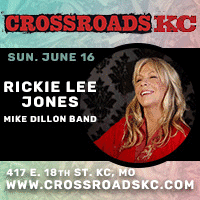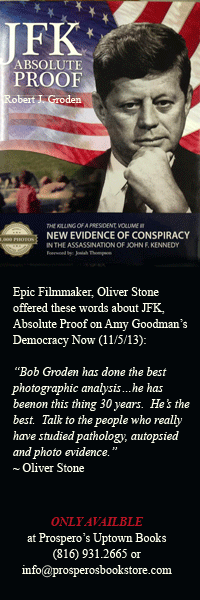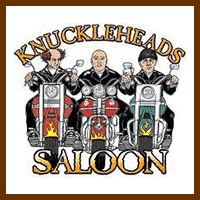 Some bands exist under the mainstream radar for a long time, earning a loyal following and indie accolades, before coming to the realization that in order to be commercially successful, a bit of bending to the will of the corporate machine is necessary.
Some bands exist under the mainstream radar for a long time, earning a loyal following and indie accolades, before coming to the realization that in order to be commercially successful, a bit of bending to the will of the corporate machine is necessary.
This is usually when the music suffers.
No longer are songs written simply for the sake of being a good song. Other considerations emerge: Can this sound cross over? Is this hook catchy enough, but still with an edge? Is my hairstyle weird enough for people to take me seriously as a musician?
But not Arcade Fire.
Or maybe, not quite as much. They have somehow tread that infinitely fine line between secret indie darling and mainstream success to perfection, culminating recently with a Grammy for 2011 Album of the Year for "The Suburbs."
But the genius part? They’ve done all this with minimal backlash. Few are the "sell-out" accusations.
Indeed, the only selling out Arcade Fire is responsible for is their packed shows where throngs of loyal fans sing along to nearly every word of nearly every hit song after hit song. This was the scene on 4/20 Day at Starlight Theater.
As Arcade Fire’s set grew near, the lights went dark. The theater marquee big screen set up along the facade projected images from "The Warriors" and "Camelot" as the band snuck on stage and fired up their guitars to a droning, buzzing frenzy that overtook the movie clips audio and segued into the opener, "Month of May."
The band came out firing, with all eight members on stage reflecting the good mood and energy of the crowd, banging on drums, jumping up and down, and generally flailing about. On many songs, two drummers pounded in sync, with a violin, a viola, accordion, and of course the keys, guitars, and other synth effects. Far from sounding crowded, though, the sonic textures that Arcade Fire manages to produce can be at one moment lush and symphonic, and at the next stripped down and intimate.
up and down, and generally flailing about. On many songs, two drummers pounded in sync, with a violin, a viola, accordion, and of course the keys, guitars, and other synth effects. Far from sounding crowded, though, the sonic textures that Arcade Fire manages to produce can be at one moment lush and symphonic, and at the next stripped down and intimate.
Never did think to myself, "I can’t even hear that accordion," as is often the case with bigger bands that have a lot going on.
As the video boards flashed 50’s style images of the suburbs (duh), palm trees, and other things you’d expect to see in those old Leave it to Beaver era public service announcements, the band never eased up. They meshed older songs nicely with ones off the new album, blistering through a few songs before reaching back to 2004’s "Rebellion (Lies)," and "Neighborhood #2 (Laika)."
Throughout the show, the crowd’s enthusiasm peaked for some of the older tracks, displaying how far Arcade Fire have come. Yes, they’ve always been critical darlings, but even those fans who were listening to them "back in the day" don’t feel disenfranchised by the recent corporate success. As I said, it’s a tiny, fine line to walk, but this band has done a good job of it so far.
About halfway through the set, as the opening chords to "Rococo" started wafting lazily through the audience, mixing with the dizzying tremolo of strings, it was clear who was in charge of this 4/20 party. Lead singer Win Butler powerfully controlled the show with his swooping and expressive vocals, a welcome contrast to the monotone dronings of openers The National.
 Even though some critics have lamented that Arcade Fire’s newer material is too formulaic and not as, well, "indie" as their previous efforts, the set gelled nearly perfectly. For my money, I could pick and choose songs off any of their three albums, mix and match them, and come out with a seamless product.
Even though some critics have lamented that Arcade Fire’s newer material is too formulaic and not as, well, "indie" as their previous efforts, the set gelled nearly perfectly. For my money, I could pick and choose songs off any of their three albums, mix and match them, and come out with a seamless product.
This was one of the real strengths of the show – no real lulls at all, no filler or throw away songs. Just a catalogue of good songs that all stand up well on their own, but when combined are greater than the sum of their parts.
When Arcade finally decided to leave the stage after a heavy hitting version of "Wake Up," hundreds in the audience pushed their way to the front knowing that security couldn’t stop everyone. The aisles filled in and the electrified Arcade Fire fans surged toward the source. Perhaps sensing the moment, Arcade Fire wasted little time (maybe 45 seconds) before returning to the stage.
"Don’t worry, Kansas City!" screamed Butler. "We saved a couple dance-y ones for you!"
The techno thump pounded off the back brick wall of Starlight and Win pounded his guitar strings to death with a tambourine, as that one guy in the band ran around stage all crazy hitting drums and anything else he could get his hands on.
The low, growling, Blondie-esque, "Sprawl II (Mountains Beyond Mountains)" ended the night in elegant euro fashion. As multi-instrumentalist Regine Chassange pierced the sky with the seemingly bleak chorus, "We can never get away from the sprawl," I couldn’t help but feel a sense of comfort, instead of claustrophobia.
While the subject matter seems hopeless from afar, it’s really not that.
Arcade Fire set list:
Month of May
Ready to Start
Rebellion (Lies)
Neighborhood #2 (Laika)
No Cars Go
Haiti
Empty Room
Neighborhood #4 (7 Kettles)
Rococo
The Suburbs
Intervention
We Used to Wait
Keep the Car Running
Neighborhood #1 (Tunnels)
Wake Up
Encore:
Neighborhood #3 (Power Out)
Sprawl II (Mountains Beyond Mountains)










Arcade Fire Hipster Attack
http://www.youtube.com/watch?v=QeHV3tyNQ60&feature=youtube_gdata_player